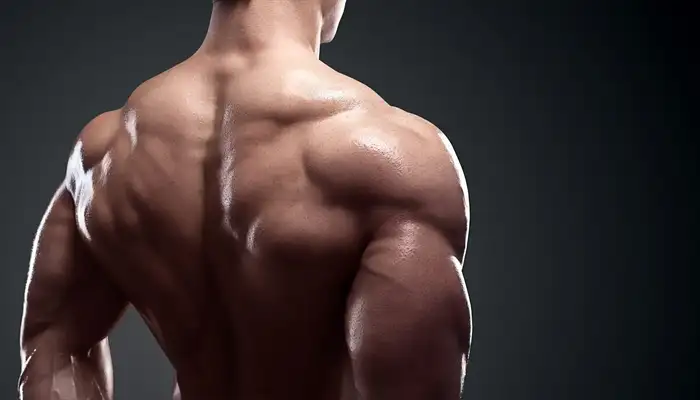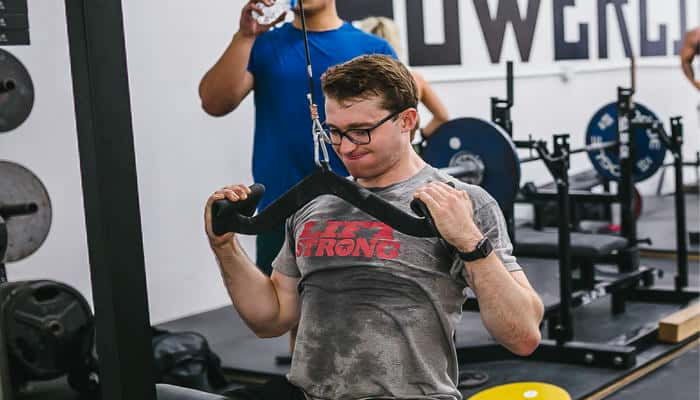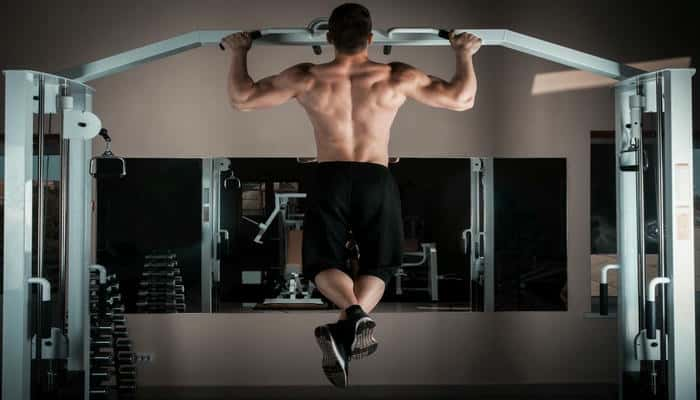The lat pulldown is a staple in any strength training program aimed at building a broad, muscular back. With numerous variations and techniques available, it’s important to understand the differences between them to get the most out of your lat pulldown machine workouts.

Understanding the Lat Pulldown
The lat pulldown primarily targets the latissimus dorsi, the large muscles spanning the mid to lower back. However, different grip types and attachments on the pulldown machine can shift emphasis to other supporting muscles. Knowing the lat pulldown muscles worked can help tailor your training for specific goals, whether it’s width, thickness, or overall back development.
Lat Pulldown Muscles Worked: Anatomy and Activation
The lat pulldown is a compound back exercise that primarily targets the latissimus dorsi, but several other muscles assist in the movement. Understanding the lat pulldown muscles worked will help you better engage the right areas, improve your lat pulldown form, and choose the most effective lat pulldown variation for your goals.
1. Latissimus Dorsi (Lats)

The main muscle activated during any lat pulldown variation is the latissimus dorsi. These are the large, wing-shaped muscles that run from your mid-back down to your waist. Whether you’re performing a wide grip lat pulldown, neutral grip lat pulldown, or a straight arm lat pulldown, your lats are always the prime mover.
- The wide grip pulldown places more emphasis on the upper lats, helping develop a broader back.
- A close grip pulldown, on the other hand, shifts some focus to the lower lats, enhancing thickness.
2. Teres Major and Minor

These smaller muscles sit near the lats and assist during cable lat pulldown movements. They’re especially active during the single arm lat pulldown and reverse grip pulldown, where range of motion is more controlled and isolated.
3. Rhomboids and Trapezius

The rhomboids (between the shoulder blades) and the middle/lower traps are activated to stabilize the scapula during the lat pulldown machine movement. Close grip lat pulldown and neutral grip pulldown variations enhance mid-back activation, making them great for posture improvement.
4. Biceps Brachii

While the lat pulldown is not a bicep-focused movement, the biceps play a key supporting role. This is especially true during the reverse grip lat pulldown and underhand lat pulldown, where the palms face the user, allowing greater elbow flexion and bicep contribution.
- The reverse grip pulldown is ideal if you’re looking to target both the back and arms.
- It’s important, however, to maintain proper lat pulldown form to avoid turning the move into a bicep-dominant curl.
5. Posterior Deltoids

The rear delts assist in shoulder extension during movements like the straight arm pulldown and straight arm lat pulldown, especially when the arms move in a long arc with a straight elbow position. These variations isolate the lats and minimize arm involvement.
6. Core and Stabilizers

During any lat pulldown alternative or standard lat pulldown machine exercise, the core muscles (rectus abdominis, obliques, and erector spinae) contract isometrically to maintain posture and stabilize the spine. This is even more important when doing single arm lat pulldown or unilateral work.
You may also like: Ultimate Guide to Creatine: Benefits, Side Effects, and Types
How Grip Affects Muscle Activation and Muscles Worked
The grip you use during a lat pulldown has a significant impact on which muscles are emphasized. While all variations primarily target the latissimus dorsi, different grip styles shift the load across upper, mid, and lower back regions, as well as involve supporting muscles like the biceps and rear delts. Below is a breakdown of how each variation alters muscle activation:
Wide Grip Lat Pulldown

Primary focus: Upper lats and teres major
The wide grip lat pulldown is the most common variation performed on the lat pulldown machine. Using a grip wider than shoulder-width flares the elbows out, minimizing bicep involvement and maximizing upper lat activation. The teres major, a small muscle located above the lats, also plays a key role in this movement.
- Ideal for building that broad, V-shaped back.
- Keep lat pulldown form strict—avoid leaning back excessively.
- Often used with a long bar on a pulldown machine or cable lat pulldown station.
Close Grip Lat Pulldown

Primary focus: Mid and lower lats, biceps
The close grip lat pulldown, often performed with a V-bar or narrow handle, emphasizes the mid-back and lower portions of the lats. This grip allows for a longer range of motion and a stronger contraction at the bottom of the movement.
- Biceps and brachialis muscles assist more than in wide grip.
- The close grip pulldown also recruits the rhomboids and traps for scapular retraction.
- One of the best lat pulldown alternatives for back thickness.
Neutral Grip Lat Pulldown

Primary focus: Balanced lat, rhomboid, and trap activation
In the neutral grip lat pulldown, the palms face each other, usually using a parallel grip handle. This grip places the shoulders in a more natural, joint-friendly position and promotes balanced muscle engagement.
- A safe option for individuals with shoulder discomfort.
- The neutral grip pulldown also activates mid-back stabilizers like the rhomboids.
- Commonly performed on a cable lat pulldown or assisted pull-down machine.
Reverse Grip Lat Pulldown / Underhand Lat Pulldown

Primary focus: Lower lats and biceps
The reverse grip lat pulldown (also known as the underhand lat pulldown) involves a supinated grip with palms facing you. This variation allows for a stronger, more natural pulling motion and a deeper contraction in the lower lats.
- Increases biceps involvement, especially the long head.
- Perfect for developing the depth and density of the lower back.
- Performed on the lat pulldown machine with either a straight or EZ-bar.
- A strict lat pulldown form ensures back dominance, not arm dominance.
Straight Arm Pulldown

Primary focus: Lat isolation with minimal arm involvement
The straight arm pulldown, or straight arm lat pulldown, is an isolation movement targeting the lats without involving the biceps. Performed by keeping the elbows locked and pulling the bar down in an arc, it works through shoulder extension instead of elbow flexion.
- Best done on a cable lat pulldown using a straight bar or rope attachment.
- Also activates the posterior delts and core stabilizers.
- Often confused with the tricep pulldown, but they serve different purposes.
To maximize the lat pulldown muscles worked, keep your chest lifted, core tight, and avoid swinging. The lat pulldown machine should allow a full stretch at the top and a hard contraction at the bottom.
You may also like: Testosterone: The Key Hormone for Strength, Muscle Growth, and Vitality
Lat Pulldown Alternatives
If you don’t have access to a lat pulldown machine, don’t worry—there are several effective lat pulldown alternatives that can help you build a strong and defined back. These exercises replicate the pulling motion of the cable lat pulldown, engage similar lat pulldown muscles worked, and can be done with minimal equipment. Whether you’re training at home or looking for variation, the following exercises are excellent substitutes.
Pull-Ups

Pull-ups are the closest bodyweight lat pulldown alternative, targeting the lats, teres major, rhomboids, and biceps. Depending on grip placement, you can replicate different lat pulldown variations:
- Wide grip pull-ups = alternative to wide grip lat pulldown
- Close grip pull-ups = mimics close grip pulldown
- Neutral grip pull-ups = substitute for neutral grip lat pulldown
- Underhand pull-ups (chin-ups) = replicate reverse grip pulldown or underhand lat pulldown
Resistance Band Pulldowns

Resistance band pulldowns closely mimic the mechanics of a cable lat pulldown, making them an excellent home-friendly solution. Anchor a long resistance band to a doorframe or pull-up bar and perform the same movement as you would on a lat pulldown machine.
You can replicate different grips with various handles or by changing your wrist positioning:
- Pull with arms wide for a wide grip pulldown
- Hands close together for a close grip lat pulldown
- Neutral hand position for neutral grip pulldown
Dumbbell Pullovers

Dumbbell pullovers are a classic bodybuilding exercise that stretches and contracts the lats through a large range of motion, much like the straight arm pulldown. While traditionally used as a chest exercise, performing pullovers with a slight bend in the elbows and focusing on shoulder extension turns it into a great lat pulldown alternative.
- Works the lats, serratus anterior, and even triceps to some extent.
- Ideal for isolating the back without elbow flexion—similar to the straight arm lat pulldown.
You may also like: Leg Press: Maximise Leg Gains With Our Guide
Bonus Alternatives:
If you’re still looking to add more variety, consider these:
- Bent-over dumbbell rows for unilateral control and strength (alternative to single arm lat pulldown)
- Inverted rows with neutral grip handles
- Landmine rows for a blend of horizontal and vertical pulling
By incorporating these lat pulldown alternatives into your routine, you can maintain back strength and hypertrophy even without a pulldown machine. Just like with the lat pulldown, focus on proper form, mind-muscle connection, and consistent progression for best results.
Final Thoughts
Whether you’re doing a reverse grip pulldown, wide grip pulldown, or a close grip pulldown, each variation brings something valuable to your training. Focus on lat pulldown form, grip variation, and muscle engagement for maximum gains.
You may also like: Cardio for Weightlifters: Best Low-Impact Options: Swimming & Cycling
FAQs (Frequently Asked Questions)
To perform a lat pulldown, sit at the machine, grip the bar wider than shoulder-width, and pull it to your upper chest while squeezing your lats. Control the movement upward. Mastering how to do lat pulldown helps build a stronger, wider back.
The lat pulldown works primarily the latissimus dorsi, along with the rhomboids, traps, biceps, and rear delts. It’s a great vertical pulling movement that develops upper-body strength and back width. If you’re wondering what does lat pulldown work, it’s mostly your upper and mid-back.
To do a lat pulldown, adjust the thigh pad, grab the bar with a firm grip, and pull it down to your upper chest while keeping your torso upright. Knowing how to do a lat pulldown correctly ensures effective lat activation and injury prevention.
The close grip lat pulldown works the mid and lower lats, biceps, and rhomboids. This variation allows for deeper contraction and increased range of motion. If you’re wondering what does close grip lat pulldown work—it emphasizes back thickness more than width.
The lat pulldown primarily works the latissimus dorsi, but also involves the traps, rhomboids, biceps, and rear delts. When asking what muscles does lat pulldown work, know it targets most of your upper back, helping build a wide and muscular physique.
To perform a proper lat pulldown, sit firmly, grab the bar with a wide grip, and pull it to your chest while keeping your spine straight. If you’re asking how to lat pulldown, remember to squeeze your shoulder blades for maximum engagement.
To use lat pulldown machine correctly, adjust the thigh pads, select a weight, grip the bar, and pull it down while contracting your lats. Control the bar back up. Learning how to use lat pulldown machine improves form and targets the back muscles effectively.
If you’re asking what muscle does lat pulldown work—it’s primarily the latissimus dorsi. Secondary muscles include rhomboids, biceps, and traps. This compound pulling movement helps improve back width and posture when done with proper technique and control.
The wide grip lat pulldown works the upper lats and teres major, helping to create a V-tapered back. If you’re wondering what does wide grip lat pulldown work, it’s excellent for building back width and upper back definition.
A lat pulldown is a back-strengthening exercise performed using a cable machine. It targets the lats through a vertical pulling motion. So, what is a lat pulldown? It’s an essential movement for developing back size and upper-body pulling strength.
The straight arm pulldown works the lats through shoulder extension with minimal bicep involvement. It also activates the core and rear delts. If you’re asking what does straight arm pulldown work, it mainly isolates the latissimus dorsi with a long range of motion.
A lat pulldown works your back—mainly the latissimus dorsi—along with supporting muscles like rhomboids, traps, and biceps. If you’re wondering what does a lat pulldown work, it develops pulling strength and contributes to a strong, sculpted back.
The lat pulldown targets the latissimus dorsi, which gives your back width. It also recruits the biceps, rhomboids, and traps. When asking what does lat pulldown target, the focus is primarily on the upper and mid-back muscles.
The lat pulldown works the large back muscle called the latissimus dorsi, along with the traps, rhomboids, and biceps. So if you’re wondering what does the lat pulldown work, it’s mainly your back with support from your arms and shoulders.
To use lifting straps on lat pulldown, wrap the straps around the bar, then around your wrists tightly. This reduces grip fatigue and lets you focus on pulling with your back. Knowing how to use lifting straps on lat pulldown boosts strength and endurance.
Yes, the lat pulldown is for back development. It mainly targets the lats while engaging supporting muscles like the traps, rhomboids, and rear delts. So if you’re asking is lat pulldown for back—the answer is absolutely.
The lat pulldown works what muscles? Mainly the latissimus dorsi, followed by the biceps, traps, and rhomboids. It’s one of the most effective upper-body exercises for improving posture and back size.
It’s a cable-based back exercise that involves pulling a bar from above down to your chest, targeting the lats and upper back. Ideal for beginners and advanced lifters aiming for back development.
While not a shoulder-focused exercise, the lat pulldown does work shoulders to a small extent—particularly the rear deltoids. So, does lat pulldown work shoulders? Slightly, but its primary focus remains on the back muscles.
To do straight arm pulldown, stand facing a cable machine, grip the bar with straight arms, and pull it down to your thighs using your lats. Learning how to do straight arm pulldown properly isolates the lats and reduces bicep involvement.

